42 reading the back of food labels
How to Understand and Use the Nutrition Facts Label | FDA - U.S. Food ... That is two times the calories and nutrients shown in the sample label, so you would need to double the nutrient and calorie amounts, as well as the %DVs, to see what you are getting in two... Reading Food Labels | ADA - American Diabetes Association Put food labels to work. The Nutrition Facts labels on foods are really the key to making the best choices. We'll cover the basics so that these labels make shopping easier for you. You've heard it all. From carb-free to low-carb, to whole and empty carbs, it's hard to know what it all means. Blood sugar highs and lows aren't always ...
How To Read Food and Beverage Labels - National Institute on Aging The % DV information is not calculated with the unique needs of older adults in mind. Read the nutrition label as a whole to determine how a particular food or drink fits into your healthy eating pattern. Is lower % DV always healthier? If a food has 5% DV or less of a nutrient per serving, it is considered low in that nutrient. If it has 20% DV or more of a nutrient per serving, it is considered high in that nutrient.

Reading the back of food labels
The Importance of Reading the Food Label and Nutritional Facts Vitamins & Minerals. You should also look at the amount of vitamins and minerals at the very bottom of the label. The label changes now require that vitamin D, potassium, iron and calcium content be included here, along with the percent daily values for each. You should aim for high levels of these nutrients. How to read food labels: MedlinePlus Medical Encyclopedia If a label says that a food has 100 mg of sodium, this means it has about 250 mg of salt. You should eat no more than 2,300 mg of sodium per day. This is the amount of sodium that is in 1 measuring teaspoon of table salt. Ask your health care provider if you should have even less. The % daily value is included on the label as a guide. › nutrition › how-to-read-food-labelsHow to Read Food Labels Without Being Tricked - Healthline Aug 19, 2020 · Reading labels can be tricky. Consumers are more health-conscious than ever, so some food manufacturers use misleading tricks to convince people to buy highly processed and unhealthy products.
Reading the back of food labels. Understanding Food Labels | The Nutrition Source | Harvard T.H. Chan ... The Nutrition Facts Label. The Nutrition Facts label is overseen by the U.S. Food and Drug Administration (FDA) and was first mandated under the Nutrition Labeling and Education Act of 1990 to help consumers make quick, informed food choices. It has undergone revisions, with the latest update released in 2016. Changes are generally based on updated scientific information and input from the public regarding ease of use. Reading Food Labels Worksheets - WorksheetsCity Free printable Reading Food Labels Worksheets to help students learn about Health And Nutrition. This worksheets are a very useful tool to improve students skill on Health And Nutrition subjects. Download our free printable worksheets today! Related posts: Fruit Writing Paper Circling Needs Wants Worksheets 10 Rules For Reading a Food Label - YouTube The basics for understanding a nutrition label are important for every person to know. This video presents clear rules to properly read a food label. This vi... Seven Seas International USA, LLC Voluntarily Recalls Giant Food ... Seven Seas International USA, LLC of St. Petersburg, Florida is voluntarily recalling 540 cases of Giant Food Private Label Sockeye Smoked Salmon, because it has the potential to be contaminated ...
› food › food-labeling-nutritionChanges to the Nutrition Facts Label | FDA - U.S. Food and ... Mar 07, 2022 · Manufacturers with $10 million or more in annual sales were required to update their labels by January 1, 2020; manufacturers with less than $10 million in annual food sales were required to ... How to Read Food Labels | Institute of Health Sciences Some front-of-pack nutrition labels use red, amber and green colour-coding. Colour-coded nutritional information, as shown in the image above, tells you at a glance if the food has high, medium or low amounts of fat, saturated fat, sugars and salt. Red means high. Amber means medium. Green means low. Why Is Reading Food Labels Important? | livestrong Checking nutrition labels so that you know what and how much you're eating plays a central role in being able to cut back on your intake. It's recommended that you cut back your sodium intake to less than 2,300 milligrams per day and your intake of added sugar and saturated fat to no more than 5 to 15 percent of your daily calories, according to the Dietary Guidelines for Americans 2010. 5 Simple Steps To Reading Packet Food Labels - The Root Cause So I am going to share with you my 5 Simple Steps to Reading Packet Labels. Trying to decipher the Nutritional Information Panel on a packet can get confusing but it doesn't have to be. Yes, all the information there is useful and serves a purpose, but I do not believe it is all 100% necessary in order to answer these two questions for yourself:
› health › article-11254439Biden unveils plan for traffic light nutrition labels on food Sep 27, 2022 · Pictured above are the labels that could be applied to four popular products in the US if the Food and Drug Administration (FDA) opts for the same traffic light nutrition label system as the UK ... Food label reading guide | Nutrition Australia Reading food and drink labels can help us make healthy choices. Food and drink labels will include information about the product, where and when it was made and a statement of ingredients, as well as any warnings or allergen statements. Most food or drink packages have a Nutrition Information Panel (NIP) which tells you the quantity of various nutrients a product contains per serve and per 100g or 100 ml. How to understand food labels | Eat For Health The Nutrition information panel on a food label offers the simplest and easiest way to choose foods with less saturated fat, salt (sodium), added sugars and kilojoules, and more fibre. It can also be used to decide how large one serve of a food group choice or discretionary food would be and whether it's worth the kilojoules. en.wikipedia.org › wiki › Food_milesFood miles - Wikipedia Food miles is the distance food is transported from the time of its making until it reaches the consumer. Food miles are one factor used when testing the environmental impact of food, such as the carbon footprint of the food. The concept of food miles originated in the early 1990s in the United Kingdom.
Reading Food Labels | SeekHealthZ Saturated fat. The food label shows both the amount of fat in grams (g) and the percent daily value per serving. This type of fat increases the amount of blood cholesterol. If you eat 2,000 calories each day, you should eat less than 13 g of saturated fat each day. Trans fat. The food label shows the number of grams (g) per serving.
Food labels telling people how much exercise is needed to burn off ... Food and drink labels showing the amount of physical activity required to burn off their calories have no impact on tackling obesity, according to the largest study of its kind in the UK. More than three in five UK adults are overweight or obese, increasing their risk of diseases such as type 2 ...
› newsNews | The Scotsman Scottish perspective on news, sport, business, lifestyle, food and drink and more, from Scotland's national newspaper, The Scotsman.
How to Read Food Labels | mySugr Check the Serving Size. Before reading the rest of the label, look at the serving size. The rest of the information — such as carbs, calories, sugars, fiber, and more — will be based on the serving size that's listed. Eating more than a serving size means you'll get more carbs, sugars, and calories than what's listed.
Who Reads the Nutrition Facts Food Labels? - School of Public Health Who Reads the Nutrition Facts Food Labels? Charlie Plain | February 6, 2018. Almost every packaged food product has a Nutrition Facts label listed on the back, giving consumers a glimpse of what they're actually eating. It can help Americans make healthy, informed food choices, but a recent study from the School of Public Health reveals many people check Nutrition Facts infrequently, if at all.
How Is The Serving Size Determined On Food Nutritional Labels In The US? The serving size is an added layer to consider when reading labels. According to the American Heart Association, serving size is the standardized amount of food listed on a nutrition label.So when ...
How to Read a Dog Food Label - American Kennel Club The quantity listed on the label tells you how much of the food is in the container. This may be measured by weight, liquid measure, or by count. Products can vary in density (think wet food...
Understanding Food Nutrition Labels | American Heart Association 3 - Limit certain nutrients. Check key nutrients and understand what you're looking for. Not all fats are bad , and total sugars can include both natural and added sugars. Limit the amounts of added sugars , saturated fat and sodium you eat, and avoid trans fat.
› how-to-read-food-labelsFood labels - NHS Nutrition information labels can help you choose between products and keep a check on the amount of foods you're eating that are high in fat, salt and added sugars. Most pre-packed foods have a nutrition information label on the back or side of the packaging. You can use nutrition information labels to help you eat a balanced diet.
› pet-food-labels-generalPet Food Labels - General | FDA Pet owners and veterinary professionals have a right to know what they are feeding their animals. The pet food label contains a wealth of information, if one knows how to read it.
Reading food labels: Tips if you have diabetes - Mayo Clinic When you're looking at food labels, start with the list of ingredients. Keep an eye out for heart-healthy ingredients, especially those that are less processed, such as whole-wheat flour, soy and oats. Monounsaturated fats — such as olive, canola or peanut oils; nuts; and seeds — promote heart health, too.
› nutrition › how-to-read-food-labelsHow to Read Food Labels Without Being Tricked - Healthline Aug 19, 2020 · Reading labels can be tricky. Consumers are more health-conscious than ever, so some food manufacturers use misleading tricks to convince people to buy highly processed and unhealthy products.
How to read food labels: MedlinePlus Medical Encyclopedia If a label says that a food has 100 mg of sodium, this means it has about 250 mg of salt. You should eat no more than 2,300 mg of sodium per day. This is the amount of sodium that is in 1 measuring teaspoon of table salt. Ask your health care provider if you should have even less. The % daily value is included on the label as a guide.
The Importance of Reading the Food Label and Nutritional Facts Vitamins & Minerals. You should also look at the amount of vitamins and minerals at the very bottom of the label. The label changes now require that vitamin D, potassium, iron and calcium content be included here, along with the percent daily values for each. You should aim for high levels of these nutrients.
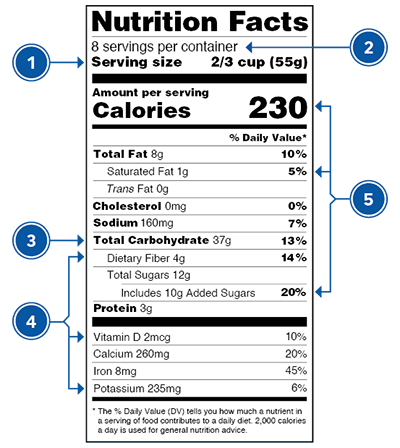





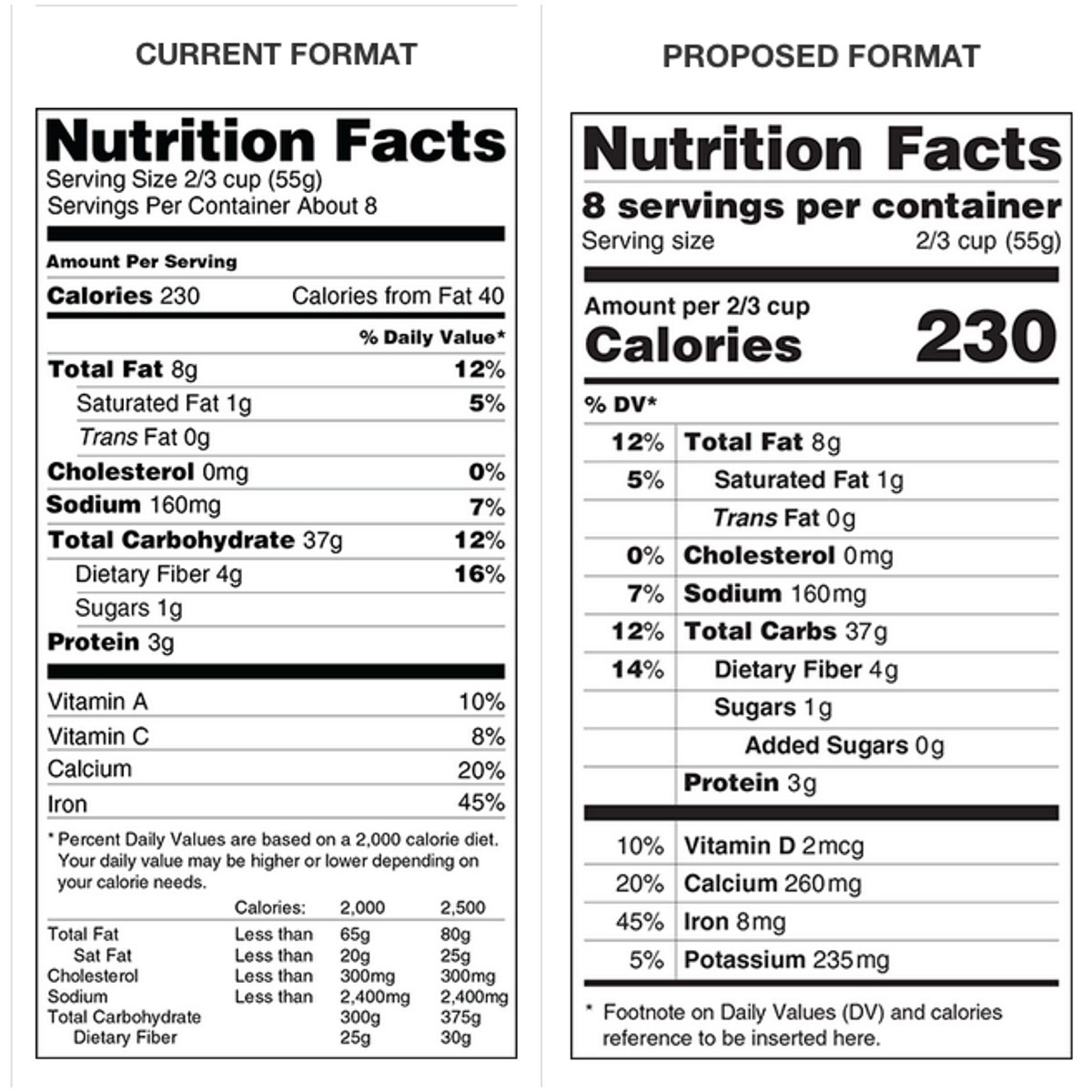



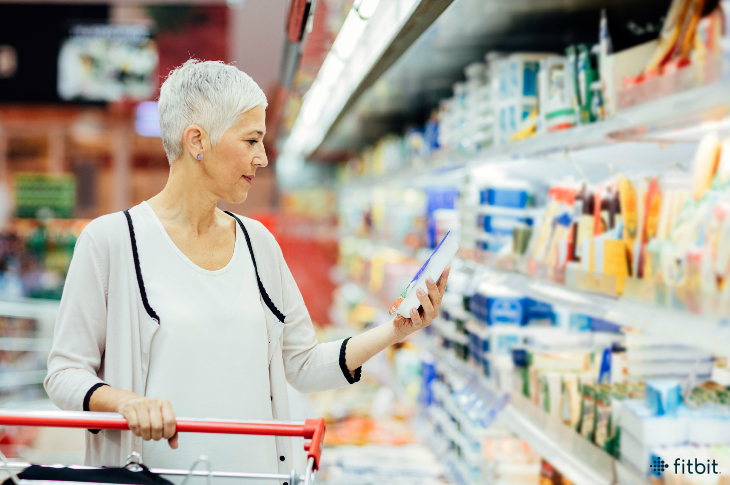


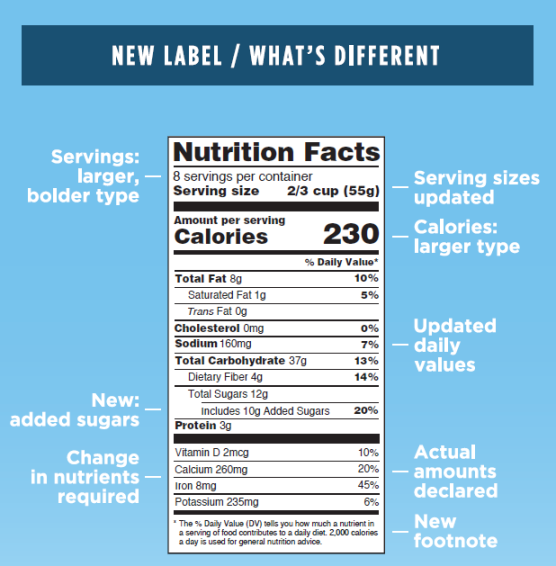


![A Comprehensive Guide to Reading Pet Food Labels [Infographic]](https://blog.petfoodexperts.com/hubfs/Blog%20Photos/back-of-bag-blog.jpg)

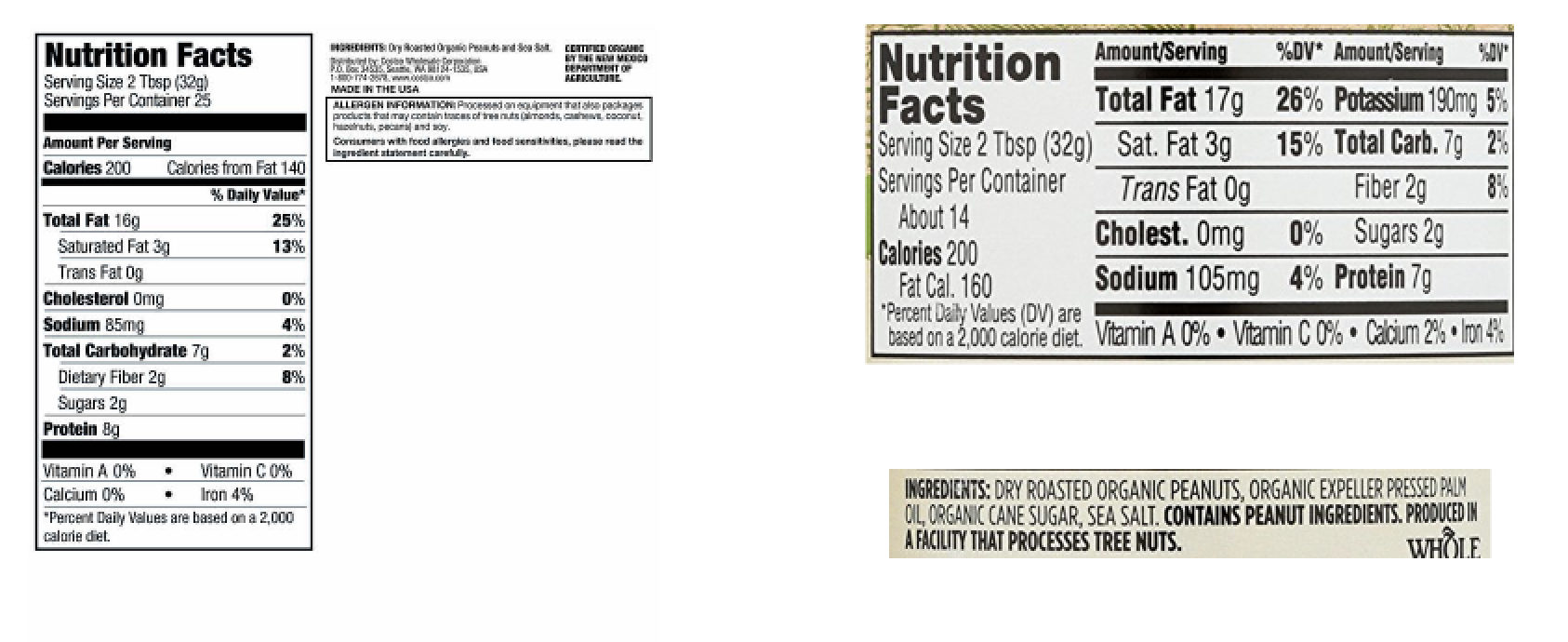









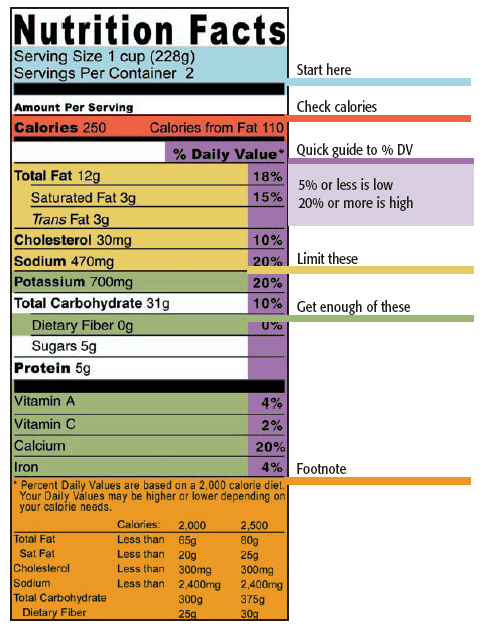


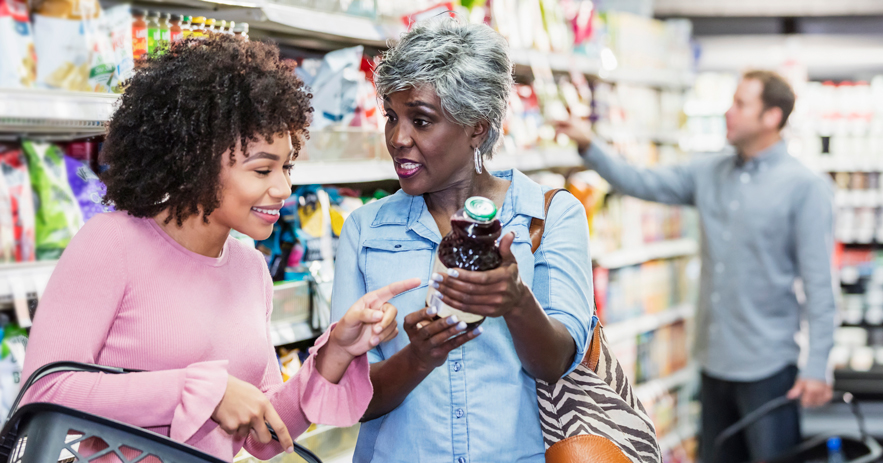

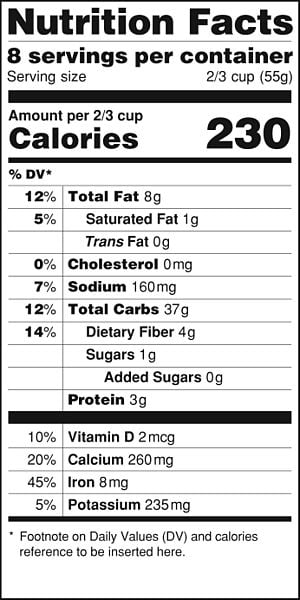
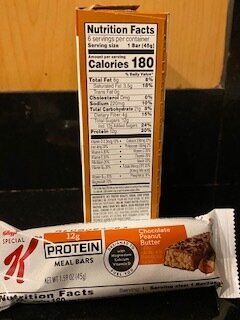
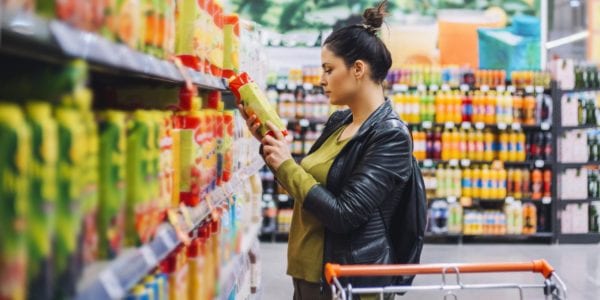

Post a Comment for "42 reading the back of food labels"